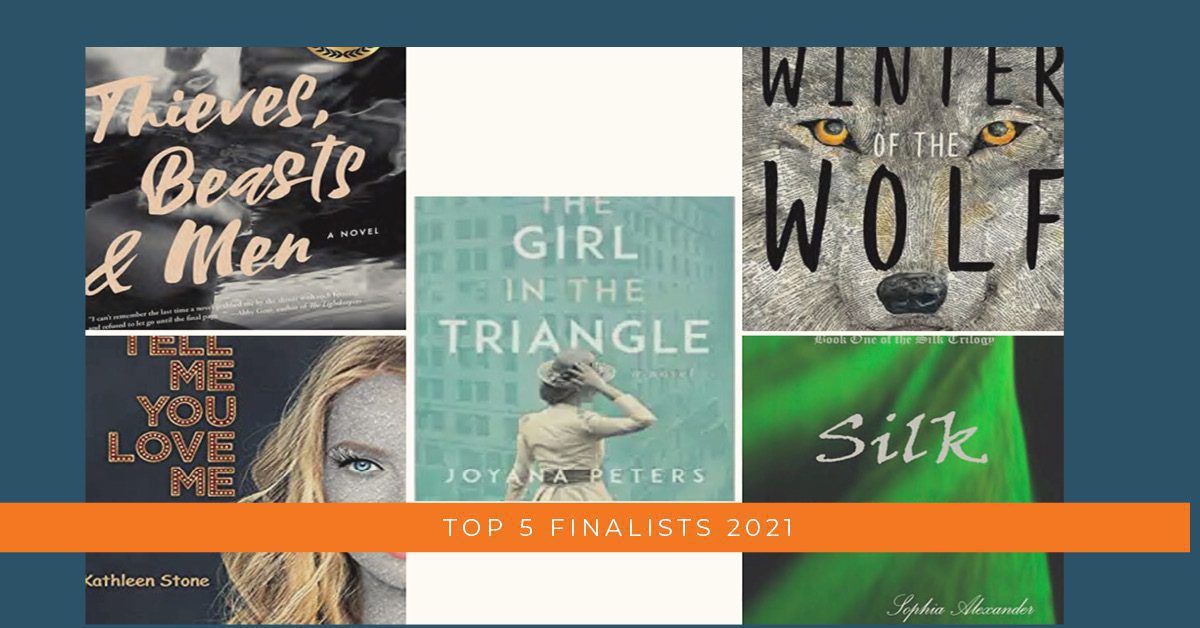
Introducing… 2021 Finalists
Introducing our finalists of the 2021 Shelf Unbound Competition for Best Independently Published Book.
Thieves, Beasts & Men by Shan Leah
Silk: Caroline’s Story by Sophia Alexander
Tell Me You Love Me by Kathleen Stone
The Girl in the Triangle by Joyana Peters
Winter of the Wolf by Martha Hunt Handler
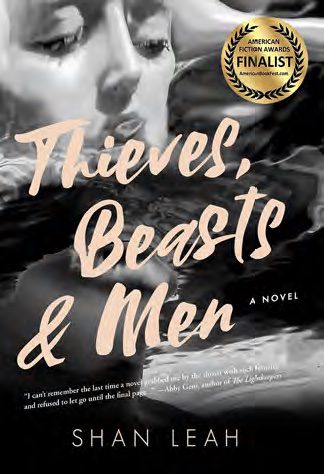
Thieves, Beasts & Men
This stunning debut uses the irresistible scenario of a hermit living in near-complete self-sufficiency in the wilderness, and asks the universally relevant question: what is the value of existing within a civilization when it is fraught with evil? Adelaide has lived a long, solitary existence in the Blue Ridge Mountains. On the verge of ending it all, she discovers two feral children raiding her garden and rescues them in a misguided attempt at a new life. Now she must find a way to care for children who are more beast than human. They only communicate with chirps and grunts, and they pine for their feral mother. When dangerous men and a wild woman emerge from the darkness in pursuit, Adelaide faces a grueling choice. She can release the children back to the wild, saving her own life but losing everything she has grown to love, or fight to defend her new family, risking the death she no longer seeks.

About the Author
Shan Leah
Shan Leah is an award-winning fine artist, freelance photographer, and lover/writer of dark literary fiction.
She was inspired to write Thieves, Beasts & Men, her debut novel, because like her protagonist, she has a tendency to romanticize a life of solitude spent deep in the woods. And though not a feral child herself, Shan was born and raised in the Florida Keys, and with more mangroves than streetlights, it was pretty damn close.
Interview with Shan Leah.
Tell us a little about your book.
SL: Thieves, Beasts & Men is a story that challenges our assumptions of motherhood when far removed from the expectations of society. It explores the notion of regret, and the choices one might make to atone for past mistakes, no matter the cost.
Adelaide has given up on her life of solitude in the Blue Ridge Mountain, content to end it all by the river. Her suicide attempt is unsuccessful, but before she can try again, she discovers an animal has been ransacking her garden. A thief, right under her nose! What begins as curiosity soon spirals into an all-out war against the beast destroying her property.
Assuming the interloper to be a bear or mountain lion, nothing can prepare Adelaide for what she traps in her garden: a feral woman, naked, dirty, communicating only with snarls and growls. And tucked within her arms are two feral children. Believing this to be her opportunity for a fresh start—and her redemption at motherhood —Adelaide captures the children, kidnapping them from their mother.
Though challenged by caring for two scared and uncommunicable children, she’s grateful for her new life. But she must stay vigilant because an angry wild woman now stalks her cabin each night, looking for a way inside.
One day, Adelaide sees a man hiding in the shadows, watching her new family from afar. An evil man from her youth that she had hoped to never see again. Now Adelaide must prepare for another kind of war, against a very different kind of beast. Because Adelaide knows from experience that he will come for the children.
Unless the wild woman gets to them first.
Thieves, Beasts & Men explores one woman’s battle to confront her past while creating a new future in the face of increasing madness.
How did you go about developing this book?
SL: My concept for Thieves, Beasts & Men sprang from my lifelong fascination with feral children, coupled with the romantic idea of running away from civilization to live alone in the wilderness.
I’ve never been a fan of societal expectations, so writing this book was a fascinating experiment for me. I tossed a few unique characters into a pot, stirred them around, and explored how that type of unusual freedom can affect human beings in different ways. As Adelaide observes in the book: Some people shouldn’t live in the woods, secluded from the rest of the world.
Some people become indulgent and self important. Or they become something else altogether.
My favorite (though most challenging) element of Thieves, Beasts & Men are the passages from the feral girl’s perspective.
How would a child who has never heard the word “red” describe the color of blood? (spoiler: the color of the bird that makes the yeep sound), or what would she make of flowers printed on a bed sheet? Or of glass, which looks like water but doesn’t feel like water? Immersing myself in her limited understanding was one of the most rewarding things I’ve done as a writer.
What was the experience of writing this book like for you?
SL: Unlike my first book (which went nowhere) I did not outline Thieves, Beasts & Men. I had only a general idea of my beginning and my end, with a few key scenes in between. The experience of outlining my first novel was too rigid for me, and it was reflected in the finished work. So when I sat down to write Thieves, I wanted to do it completely differently. Many days I would sit at the keyboard, close my eyes, breathe deeply, and wait. I would basically meditate in front of my computer until an image began to form. I’d flesh it out in my mind, structure it into words, and not until I had an entire paragraph or two bursting from my tongue would I open my eyes and begin to write.
The element of Thieves, Beasts & Men that I’m most proud of is its ending. As a reader, I find the most satisfying conclusions are those that cannot possibly be packaged as happy ending or sad ending. It must be more complex than that. It should be hard to define. Dark yet poetic. Tragic, and yet you smile because it’s also beautiful. It’s a hard balance to strike.
What writing advice do you have for other indie authors?
SL: Embrace the fear of regret. Let it cripple you (just a little). And then give that book everything you’ve got. Blood and tears. Sweat and anger. Picture yourself at the end of your life and be sure that when you finally arrive at that place, as will we all, you regret nothing. Fear of rejection? Do it anyway. Don’t think you’re good enough? Do it anyway. Don’t have the time? Make it. Too much of a perfectionist? Let it go and put your work out there. Regret nothing.
What are you working on next?
SL: My next novel is called Bands Of A Small Hurricane. It’s part coming-of-age, part father/daughter journey, but don’t let that description fool you into thinking it’s a wholesome, gentle tale. Like Thieves, Beasts & Men, this book is written with the propulsion of a suspense novel, and some of the scenes are as dark and skin-crawling as a thriller.
Bands Of A Small Hurricane follows a 14-year old girl growing up in the Florida Keys in 1967. Experiencing the challenges of teenage romance and interracial friendships, a new society burgeoning with free love and recreational drugs, a determination to overcome childhood trauma, and a growing desire to run away with a community of hippies, it traces her personal sexual revolution and discovery of self, amidst the mangrove-tangled waters of Florida’s southern edge.

Silk: Caroline’s Story
Headless dolls, horse races, and arsonthe tools of passion. It’s 1899, and Caroline Corbett is ready for the twentieth century. She’s excited to find work and meet new people-but gets more than expected when a rough-hewn Lowcountry farmer and a smalltown doctor both engage her affections.
The broad-shouldered, genial farmer is clear about his desires, and he’s there for her. The doctor is sophisticated, educated, and obviously the right choice-but sees no reason to dwell on certain realities.
In trying to decide between them, Caroline fails to consider the girl Jessie. A young sociopath bent on her own way, Jessie Bell sees very good reasons to dredge up unpleasant realities-and to create new ones. Before long, this South Carolina landscape is riddled with the detritus of her intense jealousies, which have set astonishing and horrifying events into motion.
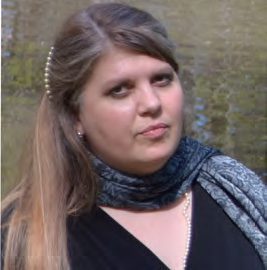
About the Author
Sophia Alexander
Sophia Alexander writes character-driven historical fiction that grips readers’ emotions and surprises them with unexpected twists. A Lowcountry native, she is the author of the Silk Trilogy. Her writing is inspired by historical fact, genealogical investigations, intuitive guesswork, and fanciful romanticizations. Sophia is a graduate of the College of Charleston and lives with her family in Savannah, GA.
Interview with Sophia Alexander.
Tell us a little about your book.
SA: Caroline Corbett is ready for the twentieth century, excited to find work and meet new people—but she gets more than she expected when a rough-hewn Lowcountry farmer and a small-town doctor both engage her affections. The broad-shouldered, genial farmer is clear about his desires, and he’s there for her. The doctor is sophisticated, educated, and obviously the right choice—but sees no reason to dwell on certain realities. Caroline must decide between them, but in doing so she fails to consider the girl Jessie. A young sociopath bent on her own way, Jessie Bell sees very good reasons to dredge up unpleasant realities—and to create new ones. Before long, this South Carolina landscape is riddled with the detritus of her intense jealousies, which have set astonishing and horrifying events into motion.
How did you go about developing this book?
SA: I’ve been fascinated by my family genealogy since the age of twelve. Despite endlessly probing my grandparents and other relatives, I could never quite sort out my granny’s family. Rumors were denied, and Granny was terribly secretive about it all. This created ongoing tension between us, even though we were otherwise close–and I suppose this novel would have only made that worse if she were still alive today! When I was grown with my own children, I came across a volume of anecdotes about Kingstree, South Carolina, that mentioned Caroline, and it revived my curiosity about that branch of my family. I still know precious little about the real individuals who inspired this story, but I pieced together these mostly-fictional answers to all my questions from the little I did know, making up major characters in the process. I did have some parameters–a few dates and anecdotes–to write the novel around. Then, after writing it, I changed most of the names, as I had fabricated so much of the book.
What was the experience of writing this book like for you?
SA: I’ve been a book-lover since long before I got into genealogy. Not long after I’d read Bessie Swann Britton’s anecdotes about Kingstree, I was in a bookstore and saw Chris Baty’s The No Plot? No Problem! Novel-Writing Kit, the cover of which touted it as ‘a treasure chest… to help you bash out a novel in a month.’ Baty is the founder of National Novel Writing Month, by the way, but at that point I’d never heard of NaNoWriMo. I’d also never written a novel before, but there are no greater celebrities for me than authors–and a friend had recently suggested that I write a book myself. I’m not sure I’d have even dared to consider it otherwise; I don’t know why, but it’s as if I needed tacit permission from someone else. So… shored up by my friend’s approval, I picked up the writing kit and actually did bash out a rough draft for Silk: Caroline’s Story within a month!
I still have the kit, which I’ve since reused, and the original calendar with daily word counts and gold stars. I spent every spare moment thinking and talking about the novel. I would take my laptop and write while my kids were in lessons. It was as near a total immersion experience as I could make it. Silk: Caroline’s Story has been through countless revisions since then, and it’s had significant additions, but the plots remain essentially unchanged.
What writing advice do you have for other indie authors?
SA: Throw yourself all-in to complete a rough draft in as short a time as you can. You don’t want to forget and leave loose threads, nor do you want the story’s character to change along with you as you age. What you want to write now is likely not what you’ll want to write years from now. It can be so hard to get back into the same head space once you’ve been out of it for a while.
Editing is entirely different, however. Take a break and come at it with fresh eyes later. I recommend doing that several times, especially for a first novel. It’s almost like having an older, wiser person helping you with it… one who innately understands you and your story’s intent.
I also recommend joining a writing group, especially after you have a rough draft in hand. Writing is a lonely business after a while, so the camaraderie is much-needed relief. Also, revising chapter-by-chapter each week for group motivates me to polish my work far better than I would feel like doing alone. I’ve learned so much about writing since that original rough draft, and I’m grateful to have had many mentors in my writing groups. Top tips are to comb through each chapter to add the range of senses and some similes/metaphors. Delete clichés and slice out redundancies, including unnecessary tag lines.
One caution about writing groups, however, is that countless well-meaning critiques are actually fairly iffy or even bad advice, so you’ll need to filter those out. If entirely different people keep pointing out the same problem on different occasions, however, it’s likely you should take a closer look at it, and that can be invaluable. I can sometimes cling stubbornly to my writing foibles, only much later to sheepishly discover that my group members were right all along!
One tendency to beware, however, is that participants sometimes let bad writing pass, as they are just waiting for it to be over, but then when they get to a truly incredible story, they’re paying sharp attention. They get excited and inspired and full of ideas on how to improve it. I often want to shield brilliant writers from all such ‘helpful’ ideas!
What are you working on next?
SA: Tapestry: A Lowcountry Rapunzel is set to be released this coming April. It’s about Caroline’s daughters and is the sequel to Silk: Caroline’s Story. I am supposed to be in the process of revising the final installment of The Silk Trilogy, Homespun, but I’ve recently let myself get distracted by my writing group’s invitation to participate in November’s traditional NaNoWriMo–so at the moment I’m actually creating an entirely unrelated YA medieval fantasy.
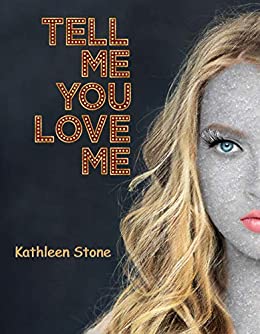
Tell Me You Love Me
In 1965 April Toulane’s life is turned upside down on her fifth birthday when her mother marries a man she’s known for only two weeks. The life she’d known is forever changed with the addition of a stepfather and a five-year-old stepbrother who terrorizes her on a daily basis. After a family tragedy the young siblings are thrust into the Hollywood spotlight, surrounded by people whose very foundation is based on secrets and lies. Struggling to grow up and find their way in a world where child stars are forever manipulated and exploited, the siblings form an unbreakable bond vowing to always protect each other when the adults entrusted to take care of them fail at every turn. “Tell Me You Love Me” is the story of April and Auggie Fairbanks, the most sought after faces in show business throughout the sixties and seventies, maneuvering their way through the lies and corruption to learn the truth about their parents and searching for the love and acceptance they so desperately crave.
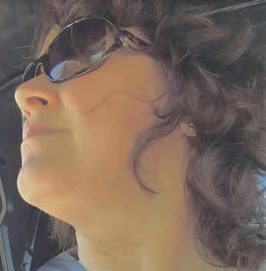
About the Author
Kathleen Stone
Kathleen has been a freelance writer since 1999 and now writes full time. Her work has appeared in Doll World Magazine, Apolloslyre.com, The Lake County Journals, Trails.com; USA Today (travel), Livestrong.com (lifestyle), Essortment, eHow, Answerbag, Examiner.com, Suite101 and YahooVoices. She is the author of the award-winning novels Tell Me You Love Me and Whispers On A String, and the Head Case Rock Novel Series (Head Case, Whiplash and Haven). She also has short stories published in the Secrets: Fact or Fiction I & II anthologies.
Interview with Kathleen Stone.
Tell us a little about your book.
KS: In 1965, April Toulane’s life is turned upside down on her fifth birthday when her mother marries a man she’s known for only two weeks. The life she’d known is forever changed with the addition of a stepfather and a five-year-old stepbrother who terrorizes her on a daily basis. After a family tragedy the young siblings are thrust into the Hollywood spotlight, surrounded by people whose very foundation is based on secrets and lies.
Struggling to grow up and find their way in a world where child stars are forever manipulated and exploited, the siblings form an unbreakable bond vowing to always protect each other when the adults entrusted to take care of them fail at every turn.
“Tell Me You Love Me” is the story of April and Auggie Fairbanks, the most sought after faces in show business throughout the sixties and seventies, maneuvering their way through the lies and corruption to learn the truth about their parents and searching for the love and acceptance they so desperately crave.
How did you go about developing this book?
KS: Oddly enough, this book came to me in a fever-induced dream while I was working on another manuscript. It was so vivid and so detailed that I had to put aside the other manuscript and begin work on this one immediately. It was the most intense writing experience of my life.
What was the experience of writing this book like for you?
KS: This particular book was different than any other book I’ve written. Due to some of the subject matter I didn’t sleep much, and I felt an overwhelming urge to protect the children I created. It was quite an intense and emotional experience and the characters are still in the forefront of my mind all the time.
What writing advice do you have for other indie authors?
KS: The best advice I can give to indie authors is to edit, edit, edit. Whether you do your own editing or hire someone to do it for you, you are ultimately responsible for the product you put out to the public. It’s vitally important to put your best work out there, and I’ve seen too many instances where books are riddled with grammatical errors, typos and inconsistencies that make my heart hurt. Just because there are platforms available that make it easy to slap a book up for sale, doesn’t mean a book is ready for the world. As an indie author you have to work twice as hard as traditionally published authors, and there is no excuse for being lazy or sloppy.
What are you working on next?
KS: I just published my new book, Hey Jude, about a four-year-old deaf child and his troubled nanny. “Hey Jude” is the story of a young woman and a child who desperately need each other, with outside circumstances fighting against them at every turn. It’s a story that will make you laugh, make you cry, and make you question everything you know about connections of the spirit. I am currently finishing up a historical fantasy novel that I hope to publish in 2022.
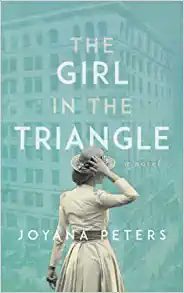
The Girl in the Triangle
When your dreams finally seem to be coming true, it’s hard to trust them.
It’s been four years since seventeen-year-old Ruth set eyes on her fiance. After surviving near-starvation, revolution and a long trip across the stormy ocean, she can’t help but wonder: Will Abraham still love her? Or has America changed him?
Nowhere’s as full of change as 1909 New York. From moving pictures to daring clothes to the ultra-modern Triangle Shirtwaist Factory where she gets a job, everything exhilarates Ruth. When the New World even seems to rejuvenate her bond with Abraham, she is filled with hope for their prospects and the future of their war-torn families.
But when she makes friends and joins the labor movement-fighting for rights of the mostly female workers against the powerful factory owners-something happens she never expected. She realizes she might be the one America is changing. And she just might be leaving Abraham behind.
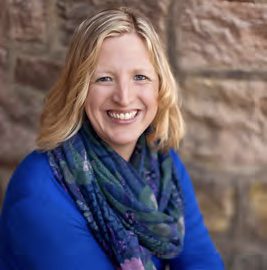
About the Author
Joyana Peters
Joyana Peters grew up in New York and loves exploring—this led to her discovery of the Triangle Shirtwaist Factory Fire and the stories it holds. She got her MFA in Creative Writing from the University of New Orleans. She currently lives in the DC area and continues to write narratives that shine a light on empowering women and moments in history.
Interview with Joyana Peters.
Tell us a little about your book.
JP: The Girl in the Triangle is a historical fiction novel about the bravery of women, the immigrant struggle and the fight for worker’s rights and social reform in America.
How did you go about developing this book?
JP: I learned about the Triangle Factory Fire in a history class in middle school. The story came to mind again after 9/11. I was still living in New York at the time and I remember newspapers releasing side by side photos of both the Triangle and Twin Towers victims jumping from the buildings. The horrifying images in those photographs never left me. I eventually realized I needed to tell a story about the Triangle victims.
What was the experience of writing this book like for you?
JP: My extensive research of the factory and the Lower East Side included visiting the inside of a tenement apartment and taking the walk Abraham, Ruth and Ester would make each day from Orchard Street to the Asch building. I examined photographs and diagrams of the layouts of the 8th, 9th and 10th floors of the factory.
How the sewing machines were in rows with just the aisles on each side, where the changing room and offices were, the doors to the staircases and elevators etc.
I tried to imagine 500 workers, mostly young Italian and Jewish women and girls, crammed into that space each day, working 52 hours per week in addition to helping to care for their families.
The amazing bravery of the women who organized and participated in the 1909 strike inspired me. In addition, I was intrigued by the complexity of Max Blanck, one of the owners of the Triangle Factory. I really wanted to try and understand his devilish ingenuity and why he made the decisions he did. The details of the court testimony in this book were taken from the transcripts and documented accounts of surviving victims.
There have been some documented arguments that history has been unkind to the “Shirtwaist Kings”— that they didn’t actually do anything wrong and were just following the laws of the time. However, I strongly believe the victims of the Triangle Fire would disagree. All they needed was an unlocked door.
What writing advice do you have for other indie authors?
JP: Do your research and invest in community! To be able to competent, you need to make sure your novel is truly ready. Be prepared to spend money to lay your foundation. Invest in professional editing and cover art. There are amazing resources out there to learn the ropes. I strongly recommend David Gaughran and Nick Stephenson’s websites, courses and books to really set yourself up for marketing success.
In addition to that, find Author groups and build relationships. Other authors are NOT your competition, they are your lifeline, mentors and cheering squad. The more your foster those relationships, the better your craft and success!
What are you working on next?
JP: I’m currently finishing up a prequel to Ruth’s story called The Girl in St. Petersburg. It is about Ruth’s survival during the revolution in Russia. It is due to be released in early 2022!
P.S. You can get a sneak peak of Joyana’s upcoming prequel on her website at https://joyanapeters.com/joyana-peters-books/
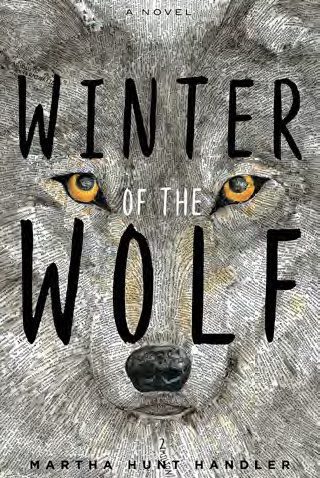
Winter of the Wolf
A tragic mystery blending sleuthing and spirituality. An exploration in grief, suicide, spiritualism, and Inuit culture, Winter of the Wolf follows Bean, an empathic and spiritually evolved fifteen-year-old, who is determined to unravel the mystery of her brother Sam’s death.
Though all evidence points to a suicide, her heart and intuition compel her to dig deeper. With help from her friend Julie, they retrace Sam’s steps, delve into his Inuit beliefs, and reconnect with their spiritual beliefs to uncover clues beyond material understanding.
Both tragic and heartwarming, this twisting novel draws you into Bean’s world as she struggles with grief, navigates high school dramas, and learns to open her heart in order to see the true nature of the people aroundher. Winter of the Wolf is about seeking the truth–no matter how painful–in order to see the full picture.
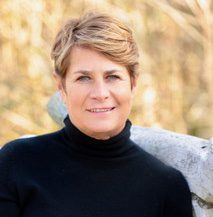
About the Author
Martha Hunt Handler
Martha Hunt Handler grew up dreaming of wolves and has always understood that her role in this lifetime is to tell stories and be a voice for nature. She has been an environmental consultant, a magazine columnist, an actress, and a polar explorer, among other occupations. When she and her four children relocated from Los Angeles to New York more than twenty years ago she began to literally hear the howls of wolves. This marked the beginning of her work advocating on behalf of wolves at the Wolf Conservation Center (nywolf.org). Winter of the Wolf is Martha’s debut novel.
Interview with Martha Hunt Handler.
Tell us a little about your book.
MH: Winter of the Wolf is an exploration in grief, suicide, spirituality, intuition and native cultural beliefs. It follows Bean, an empathic and spiritually evolved fifteen-year-old, who is determined to unravel the mystery of her brother Sam’s death. Though all evidence points to a suicide, her heart and intuition compel her to dig deeper.
With help from her friend Julie, they retrace Sam’s steps, delve into his Inuit beliefs, and reconnect with their own spiritual beliefs to uncover clues beyond material understanding. Both tragic and heartwarming, this novel draws you into Bean’s world as she struggles with grief, navigates high school dramas, and learns to open her heart in order to see the true nature of the people around her.
How did you go about developing this book?
MH: When my best friend from childhood called to tell me, she’d found her twelve-year-old son hanging, I found myself falling into a dark abyss. We had both been raised very spiritually and believed that souls are only here for the time it takes them to learn certain lessons.
But neither of us could imagine what her son could possibly have learned in the short time he was here. And at her funeral, I learned just how different suicides are from other deaths. On top of grieving, my friend was dealing with shame, blame and guilt from those around her. People wondered why he wasn’t seeing a therapist or on medication. But the truth was he was a seemingly very happy, well-adjusted boy with loads of friends. I felt at a complete loss as to how to be a friend. What could I possibly do or say that would make this easier for her?
Eventually, I started journaling daily to get all my dark thoughts out of my head. One day, not long after this, I began to hear her son’s voice. I’d never channeled anyone before but his voice was unmistakable. He was insistent that I use my journal entries to begin a novel.
The idea seemed crazy at first, but eventually it started to make sense. This story isn’t his story – only the manner of death is the same- but this boy was in my head encouraging me until the very end. And as the truth of his death finally came to the surface (It’s a mystery so I won’t say more), I knew I had my ending.
What was the experience of writing this book like for you?
MH: It was a very long (18 years!) and winding road.
I’d been a scientific writer as an Environmental Consultant, but I’d never written a word of fiction. In my heart, I’d wanted to be a storyteller from an early age, but I lacked confidence and didn’t believe I had talent to be a fiction writer. I spent the first 14 years writing on the sly. I didn’t share it with anyone. But little by little, I began to believe that I had something important to say and that I could pull this off.
When I finally committed to the process by telling others what I was doing, securing an office, and showing up regularly, the novel really began to take shape. And when I realized that I could weave in everything that was important to me (wolves, moving from grief to gratitude and growth, listening to our intuition, Inuit beliefs, spirituality, etc.), I understood that this was novel my destiny.
What writing advice do you have for other indie authors?
MH: I think there is a lot to be said about committing to the process of writing on a daily basis. It seems that when you have a structure to your writing time, your muse knows when and where to show up.
I know a lot of writers love being a part of a writing group, but I found it distracting and a waste of valuable time to read and critique others’ writing. I found the few writing conferences I attended to be extremely helpful. It can be a lonely profession, so it’s comforting to be around others who are facing similar challenges, and if you are further along, you might even be able to secure an agent or publisher.
The publishing arena is changing very fast. I’ve found it helpful to join Facebook groups of other authors in your genre. You can ask questions and learn about other resources.
What are you working on next?
MH: I’m working on an Equal to Winter of the Wolf. It would take place in the same time period but it would be from Sam’s perspective. I think it will be interesting to consider what it might be like for our loved ones who’ve passed on to be watching as we grieve. Are we productive in our grieving or are we digging ourselves deeper into a hole? Are we growing from the experience and are we grateful that we had this soul in our lives for as long as we did, or are we stuck and unappreciative?

[cm_page_title title=”Continue Reading” subtitle=” Shelf Unbound”]
Article originally Published in the December / January 2022 Issue: 2021 Indie Best Award Winners.
